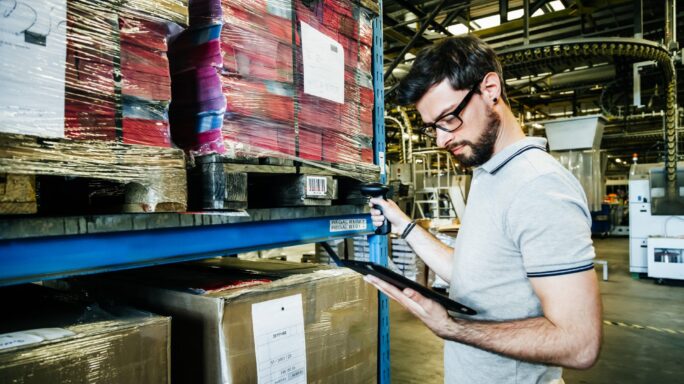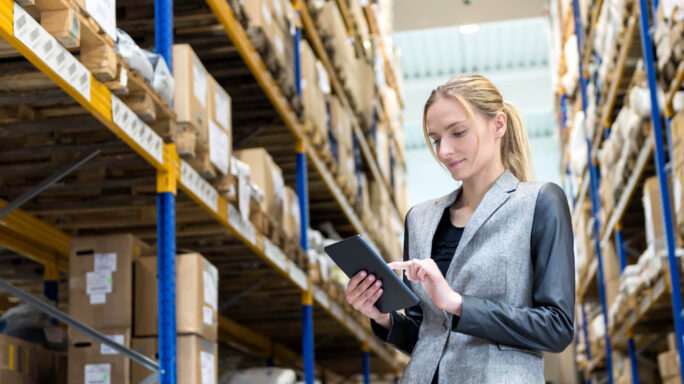Strategy, Legal & Operations
VAT after Brexit: What accountants need to know to support their clients
Brexit has brought VAT accounting changes that accountancy clients need to know about. In this article, we explain the headline changes for 2021.

Brexit is now done and adaptations are required for business – not least when it comes to VAT accounting.
Domestic VAT hasn’t changed, but VAT accounting for imports/exports has. This is regardless of whether the trade involves European Union (EU) countries or the rest of the world.
The reintroduction of postponed VAT accounting means there will be little if any cash flow impact for clients who import from the EU, and importers from the rest of the world may see a positive cash flow benefit. However, the way their VAT Return is completed has changed.
Postponed VAT accounting is likely to be used in concert with deferred customs declarations, as covered in two other recent Sage Advice blogs:
- Customs and VAT after Brexit: What happens for UK businesses?
- Deferred and simplified customs declarations: What you need to do
The use of the reverse charge system, the process for claiming VAT refunds and the distance selling rules for exports to EU countries are changing too.
Below, we take an in-depth look at VAT changes likely to be impacting your clients as 2021 gets underway.
We use the standard abbreviations of B2B and B2C to refer to business-to-business transactions, or business-to-consumer.
We also refer to Great Britain (GB), which is the countries of England, Scotland and Wales. Northern Ireland has separate VAT arrangements, as discussed later.
Here’s what this article covers:
What changed with VAT following Brexit?
- Export of goods from GB as of 1 January 2021
- Export of goods from GB to EU as of 31 July 2021
- Export of services from GB as of 1 January 2021
- B2C export of services from GB as of 1 July 2021
- Imports of goods over £135 and postponed VAT accounting
- VAT on goods imports – £135 and under
- VAT on purchases of services from the EU or non-EU
Communicating Brexit changes to clients
What changed with VAT following Brexit?
Here’s the key changes for import/export VAT (if any) now that the Brexit transition period has ended and GB is no longer part of the EU VAT system.
Export of goods from GB as of 1 January 2021
The following rules apply.
B2B to EU
Zero-rate the sale for UK tax purposes (providing the zero-rating criteria have been met) and report in box 6 on the client’s VAT Return.
Tax is applied in the destination country according to that country’s import procedures.
Notably, clients should be encouraged to discuss this with their customers because it may make their sales less competitive compared to prior to the end of the Brexit transition period.
B2C to EU
Zero-rate, as with B2B sales.
B2B and B2C to non-EU countries
This is unchanged. Sellers should zero-rate for VAT purposes and record the value in VAT Return box 6.
Tax is applied in the destination country via that country’s import procedures.
VAT Returns in EU customer countries
For B2B and especially for B2C, the seller will need to consider who will pay the import VAT upon importation into the EU country.
If the seller wishes to do this then they will need to register for VAT in that country and consequently charge the customer VAT of the destination country.
This is likely only to be the case if the seller wants to facilitate the sale by covering the foreign import VAT.
Export of goods from GB to EU as of 31 July 2021
The EU VAT e-Commerce Package comes into effect on 31 July 2021.
UK sellers can use the new Import One-Stop-Shop (IOSS) system for B2C sales of goods with a consignment value of under €150 that are imported into the EU.
If IOSS is used, VAT of the destination country must be charged at the point of sale. The VAT is then reported by the UK seller using a single IOSS return.
This is similar to the current Mini One-Stop-Shop (MOSS) system, in that it avoids the seller having to register for VAT in every EU country they sell in.
If IOSS is not used, or for consignments over €150, zero-rating is again used and destination VAT is applied via import procedures.
Export of services from GB as of 1 January 2021
- B2B to EU: Nothing has changed. Sales of services that apply the reverse charge formerly will continue to use the reverse charge, with tax applied in the destination country. On the VAT Return this should be reported in box 6.
- B2B to non-EU: As above – nothing has changed.
- B2C to EU (non-MOSS): Again, nothing has changed.
- B2C to EU (MOSS): Clients should register for and start using the non-union MOSS to report B2C sales of certain digital services to consumers in the EU. As such, they can no longer use the MOSS threshold, which allows businesses to apply VAT in their own country before having to apply VAT of the destination country for roughly the first £8k of relevant sales per year. This is likely to result in more UK businesses having to register for non-union MOSS, if they haven’t already.
- B2C to non-EU: Nothing has changed. In general, UK VAT should be applied.
B2C export of services from GB as of 1 July 2021
B2C sales of services to the EU that are subject to VAT in the country of the customer can be reported through the new OSS, which replaces the MOSS, for certain products sold to the consumer. This is, again, instead of having to register for VAT in each EU country sold to.
The place of supply rule continues to be used if clients make use of OSS.
Imports of goods over £135 and postponed VAT accounting
The end of the Brexit transition period ushered in a major new VAT accounting requirement for businesses: VAT is payable on imports if they’re over £135.
This might create a negative cash flow impact for businesses, who could also find goods are held at customs checkpoints until it’s paid.
The new postponed VAT accounting scheme is the solution and provides an outcome for clients very similar to the reverse charge mechanism used for EU trade prior to Brexit.
Rather than physically paying import VAT and then reclaiming it on the subsequent VAT return, the VAT is accounted for as input and output VAT on the same return.
Use of the postponed VAT accounting scheme is optional.
If your clients wish, they can pay the VAT upfront when the goods enter free circulation in the UK (at the port of entry, for example, or after release from a customs warehouse).
This will require them to obtain monthly C79 reports from HMRC, as currently is the case for non-EU imports.
However, postponed VAT accounting is mandatory if clients defer the submission of customs declarations – such as making use of the initial six-month customs deferment period after the end of the transition period.
The import VAT is accounted for on your clients’ VAT Return in three of the ‘9 boxes’ as follows:
- Box 1 – VAT due on sales and other outputs: Include the VAT due in this period on imports accounted for through postponed VAT accounting.
- Box 4 – VAT reclaimed on purchases and other inputs: Include the VAT reclaimed in this period on imports accounted for through postponed VAT accounting.
- Box 7 – Total value of purchases and all other inputs excluding any VAT: Include the total value of all imports of goods included on the client’s online monthly statement, excluding any VAT.
Key to clients managing their postponed VAT accounting are the online monthly statements.
This shows simply the import VAT that has been postponed during the previous month. But it only shows imports for which there have been customs declarations and therefore doesn’t show imports that have been deferred.
If customs declarations have been deferred, as is possible for the first six months of 2021, clients will need to estimate import VAT and then correct it in their next VAT Return once the declaration has been prepared and the calculated import VAT appears on a subsequent report.
VAT on goods imports – £135 and under
The government has used Brexit and the end of the transition period to usher in a handful of other VAT-related changes that had been planned. These should be communicated to your clients alongside the headline VAT changes above.
Low-Value Consignment Relief (LVCR) was abolished as of 1 January 2021, for example. Previously, this exempted imports with a value below £15 from import VAT.
And VAT on imports with a consignment value of £135 or lower have VAT applied at the point of sale, rather than applied as import VAT at customs.
For B2C transactions this UK VAT is charged and collected by the seller but for B2B transactions, the VAT is the customer’s concern.
In other words, any of your clients that receive goods of £135 or less as imports have to account for the VAT as part of the reverse charge procedure, declaring the VAT on their next VAT Return.
Normal rules apply for the tax point, which is to say, it will usually be the invoice date.
Your clients should ensure the seller knows their VAT number, or the seller will have no choice but to treat it as a B2C sale and apply VAT.
VAT on purchases of services from the EU or non-EU
Once again, this has not changed. B2B sales of services are generally subject to tax in the country of the customer.
Therefore, UK VAT will, in most cases, be applied by your clients via the reverse charge mechanism and reflected in boxes 1, 4, 6 and 7.
The Northern Ireland Protocol
Northern Ireland receives special treatment now Brexit has occurred. From a VAT perspective, it effectively has one foot in the EU and one in the UK.
Trade of goods with its Republic of Ireland neighbour, and indeed the rest of the EU, continue to be treated as intra-community supplies and acquisitions.
However, transactions between Northern Ireland and the rest of the UK also continue to be treated as they were prior to the end of the Brexit transition period – as domestic sales and purchases, from a VAT perspective.
Services are excluded from the protocol, so Northern Ireland will follow the same rules as the rest of the UK.
The UK government will continue to administer VAT in Northern Ireland, as it always has done.
Postponed VAT accounting can be used by Northern Ireland businesses too. Because Northern Ireland remains part of the EU VAT area, and goods arriving from the EU will not be considered imports, it’s not required.
However, businesses in Northern Ireland can still use postponed VAT accounting for imports from non-EU countries – something that could deliver cash flow benefits to those that already import from outside the EU.
Communicating Brexit changes to clients
As always, accountants can play a key role in communicating changes to clients.
Brexit adaptation presents yet another opportunity for you to become more intimately involved in your clients’ day-to-day businesses, and to create new or improved service offerings to match.
Those who have been through Making Tax Digital (MTD) for VAT, and are about to embark on MTD for Income Tax, should be becoming acutely aware of how compliance changes are creating a very different accounting landscape where advisory services and accountant-as-business-partner drive fresh business opportunities.
Who else is your client going to turn to when they complete their first postponed VAT accounting return than their accountant?
Who else outside of the government is going to know if the details are correct?
As well as communicating the changes right now, you and your practice need to build in these touchpoints for ongoing work across 2021. You need to ensure there’s suitable capacity for when client VAT Returns become due.
Business after Brexit
Need help doing business post-Brexit? Get this free guide and discover what you need to know and do now.







Ask the author a question or share your advice